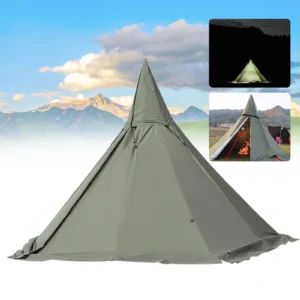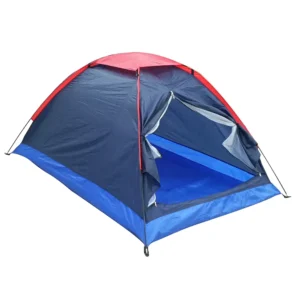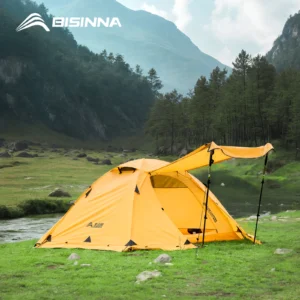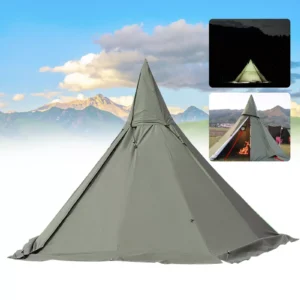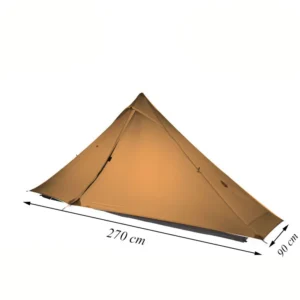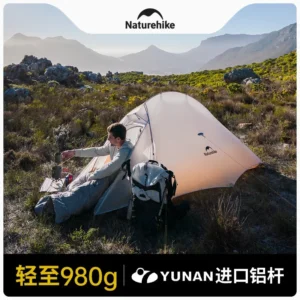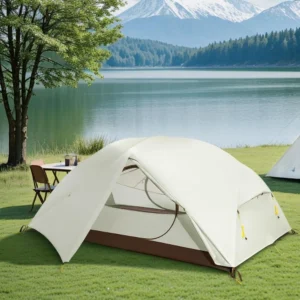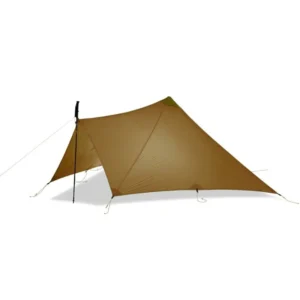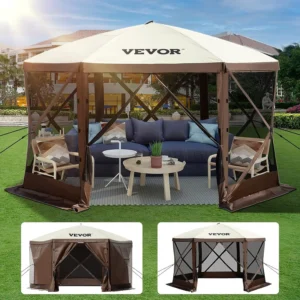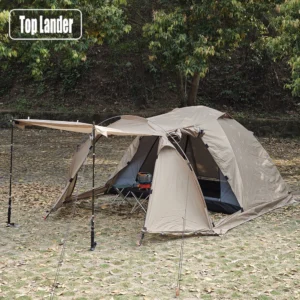2 Person Backpacking Tents
Share backcountry adventures in comfort with our 2 person backpacking tents. They’re light to carry, offer solid weather protection, and provide enough room for two.
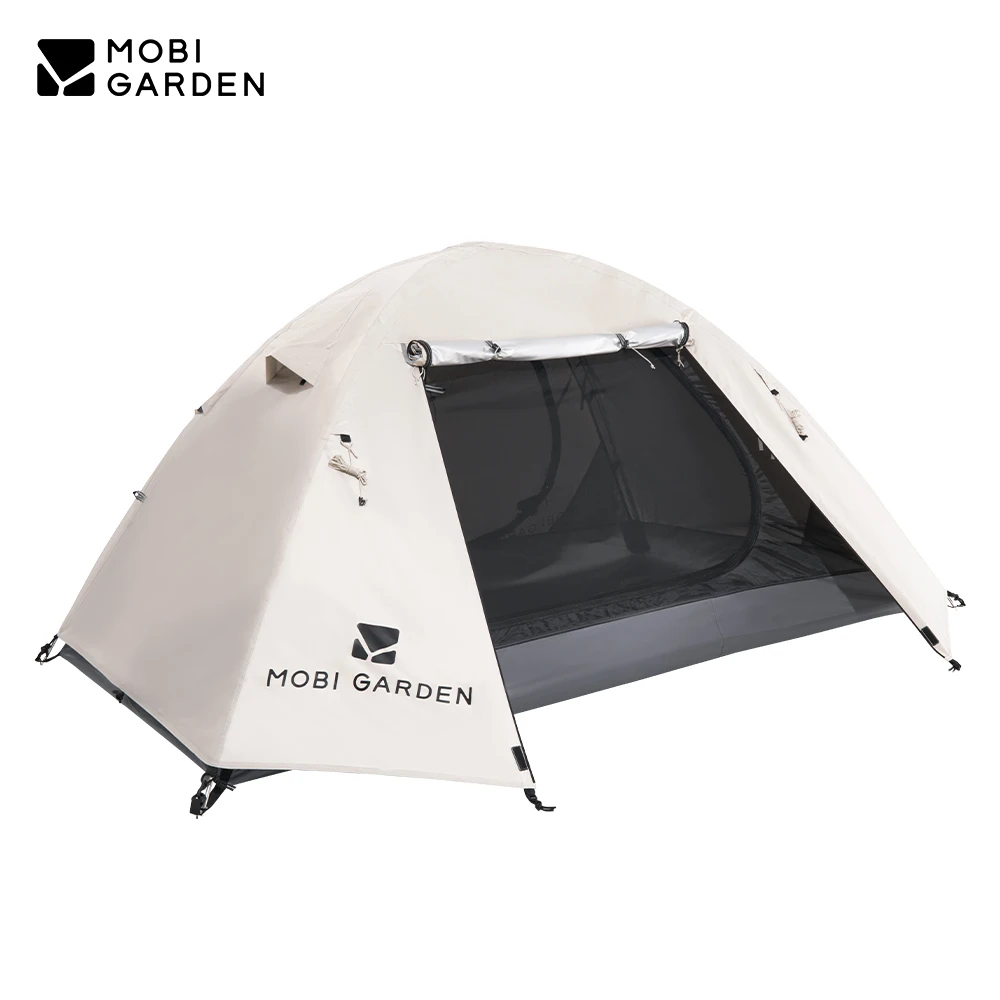
Showing 1–12 of 67 results
Heavy Duty 4 Season Tent, Trekking Pole Backpacking Tent, Winter Camping Tent
Price range: $424.76 through $440.41 Select options This product has multiple variants. The options may be chosen on the product pageHeavy Duty 4 Season Tent, Trekking Pole Backpacking Tent, Waterproof Camping Tent
$435.45 Select options This product has multiple variants. The options may be chosen on the product pageBackpacking Tent with Vestibule, Trekking Pole Backpacking Tent, Waterproof Camping Tent
$235.32 Select options This product has multiple variants. The options may be chosen on the product pageEasy Setup Camping Tent, Trekking Pole Backpacking Tent
$142.40 Select options This product has multiple variants. The options may be chosen on the product pageLightweight Backpacking Tent, Trekking Pole Backpacking Tent, Waterproof Camping Tent
Price range: $171.12 through $173.16 Select options This product has multiple variants. The options may be chosen on the product pageHeavy Duty 4 Season Tent, Trekking Pole Backpacking Tent, Winter Camping Tent
$491.84 Select options This product has multiple variants. The options may be chosen on the product pageHeavy Duty 4 Season Tent, Trekking Pole Backpacking Tent, Winter Camping Tent
$408.59 Select options This product has multiple variants. The options may be chosen on the product pageLightweight Backpacking Tent, Ultralight Backpacking Tent, Ultralight Trekking Pole Tent
Price range: $462.40 through $587.15 Select options This product has multiple variants. The options may be chosen on the product pageLightweight Backpacking Tent, Trekking Pole Backpacking Tent, Ultralight Backpacking Tent, Ultralight Trekking Pole Tent
Price range: $471.85 through $478.11 Select options This product has multiple variants. The options may be chosen on the product pageLightweight Backpacking Tent, Trekking Pole Backpacking Tent, Ultralight Backpacking Tent, Winter Camping Tent
$1,353.20 Select options This product has multiple variants. The options may be chosen on the product pageLightweight Backpacking Tent, Ultralight Backpacking Tent, Waterproof Backpacking Tent
$391.05 Select options This product has multiple variants. The options may be chosen on the product pageLightweight Backpacking Tent, Trekking Pole Backpacking Tent, Ultralight Trekking Pole Tent
Price range: $355.90 through $367.93 Select options This product has multiple variants. The options may be chosen on the product page
Showing 1–12 of 67 results
Discover the Perfect Balance of Weight, Space, and Protection
Welcome to our guide on 2-person backpacking tents, where your journey to finding the ideal shelter begins. At Explore Elements, we’ve spent countless nights under canvas in conditions ranging from scorching desert heat to alpine snowstorms, testing each tent to its limits. The perfect backpacking tent strikes a delicate balance—light enough not to weigh down your pack, spacious enough for comfort, and durable enough to withstand nature’s challenges.
Our meticulous testing goes beyond manufacturer claims. We’ve pitched these tents in howling winds, driving rain, and on unforgiving terrain to ensure they deliver when it matters most. Whether you’re planning weekend adventures or extended backcountry expeditions, this guide will help you navigate the essential features, materials, and designs that separate adequate tents from exceptional ones.
Browse our carefully curated selection of premium lightweight backpacking tents that have earned their place in our inventory through real-world performance.
Top-Rated 2-Person Backpacking Tents for Every Adventure
We evaluate our tents based on three critical factors: weight-to-space ratio, weather protection, and setup simplicity. Here’s our selection of standout performers:
Ultralight Champions
Our ultralight backpacking tent category features options weighing under 3 pounds (1.4 kg), perfect for those counting every ounce. These tents sacrifice minimal comfort while dramatically reducing pack weight, featuring innovative pole structures and lightweight yet durable fabrics that have withstood our most demanding trail tests.
All-Season Defenders
When weather conditions become unpredictable, our 4-season winter 2-person tents offer uncompromising protection. With reinforced pole structures, steep walls that shed snow, and robust materials, these shelters provide peace of mind when the forecast looks threatening.
Spacious Comfort
For those prioritizing livability, our roomier options feature strategic pole designs that maximize interior volume without excessive weight. Vertical walls, higher peak heights, and thoughtful door placements create a home away from home that still packs down reasonably for the trail.
Essential Features to Consider When Choosing Your Tent
Weight and Pack Size
Every ounce matters when you’re carrying your home on your back. Trail weight (tent body, rainfly, and poles) typically ranges from 2-5 pounds (0.9-2.3 kg) for quality 2-person backpacking tents. Consider your hiking style and distance when determining your acceptable weight range.
Seasonality and Weather Protection
Most backpackers need a versatile 3-season tent (spring, summer, fall), featuring plenty of mesh for ventilation with a full coverage rainfly for stormy conditions. If you’re venturing into winter landscapes or high elevations, consider a 4-season tent with stronger poles and less mesh.
Design Type
Freestanding tents set up anywhere without requiring stakes, offering flexibility on rocky or hard surfaces. Semi-freestanding designs save weight but need some staking, while trekking pole supported shelters eliminate dedicated poles altogether, dramatically reducing weight for minimalists willing to adapt their setup routine.
Understanding Tent Materials and Durability
The fabrics used in your tent directly impact its weight, durability, and weather resistance. Denier ratings indicate fabric thickness—higher numbers mean greater durability but increased weight. Most backpacking tents balance these factors with floor materials ranging from 30-70 denier and rainflies from 15-30 denier.
Nylon dominates lightweight tent construction for its excellent strength-to-weight ratio, though it stretches when wet. Polyester resists UV damage better and maintains consistent tension when damp. Both materials receive waterproofing treatments, measured in millimeters of water pressure—look for ratings above 1200mm for adequate protection.
Aluminum poles offer the best combination of strength, flexibility, and weight for most backpackers. Premium options use aircraft-grade aluminum alloys, while budget alternatives might use heavier, less durable materials.
Weather Protection: Keeping You Dry and Comfortable
A tent’s weather protection capability determines whether your night is restful or miserable when conditions deteriorate. Full-coverage rainflies extend to the ground and offer superior protection compared to partial flies that prioritize weight savings but expose portions of the inner tent to driving rain.
Look for tents with “bathtub” floors where the waterproof floor material extends several inches up the tent walls, preventing water from seeping in during heavy downpours. Quality tents feature factory-taped seams, but checking these before venturing out can prevent unwelcome surprises.
Wind stability depends largely on pole structure and orientation. Dome designs typically resist wind better than tunnel configurations, while low-profile tents slice through wind more effectively than taller models.
Livability: Maximizing Comfort for Two Backpackers
The industry’s definition of “2-person” is often optimistic. When evaluating floor dimensions, consider that standard sleeping pads are approximately 20 inches (51 cm) wide, meaning a truly comfortable 2-person tent needs at least 50-52 inches (127-132 cm) of width. Length should accommodate your height plus some gear storage.
Vestibule space significantly enhances livability by providing covered storage outside the sleeping area for boots, packs, and cooking during rain. Dual vestibules (one per door) eliminate the need to climb over your partner for midnight bathroom breaks and provide personal storage space.
Interior organization features like mesh pockets, gear lofts, and light-diffusing pockets for headlamps transform a basic shelter into a functional living space without adding significant weight.
Setup and Portability: From Pack to Pitched
After miles on the trail, a complicated tent setup can be frustrating. Color-coded poles, clips, and intuitive designs make evening camp setup and morning breakdown efficient. Practice at home before heading out—even the simplest tents have learning curves.
Single-wall tents combine the rainfly and tent body into one layer, saving weight but often increasing condensation. Double-wall designs separate these components, improving ventilation and reducing moisture buildup inside the tent.
Do You Need a Footprint? Protection vs. Weight
A footprint—a custom-sized ground cloth—protects your tent floor from abrasion and punctures. While adding 4-8 ounces (113-227 g) to your pack, this small investment can significantly extend your tent’s lifespan, especially on rough terrain.
Budget-conscious backpackers can create DIY alternatives using lightweight plastic sheeting (Tyvek or polycryo), trimmed slightly smaller than your tent floor to prevent water collection. For established campsites with minimal ground hazards, you might skip the footprint altogether to save weight.
The Bottom Line: Investment vs. Performance in Backpacking Tents
Quality backpacking tents represent a significant investment, with prices typically ranging from $200 to $600. This price spectrum reflects meaningful differences in weight, durability, and weather protection.
The most worthwhile upgrades include superior waterproofing, aluminum rather than fiberglass poles, and thoughtfully designed ventilation systems. For weekend warriors, mid-range options often provide the best balance of performance and value. Those embarking on longer expeditions or facing extreme conditions will appreciate the reliability and reduced weight of premium models.
Remember that proper care—thorough drying before storage, gentle cleaning, and mindful setup—will extend the life of any tent, making your investment go further no matter your budget.


